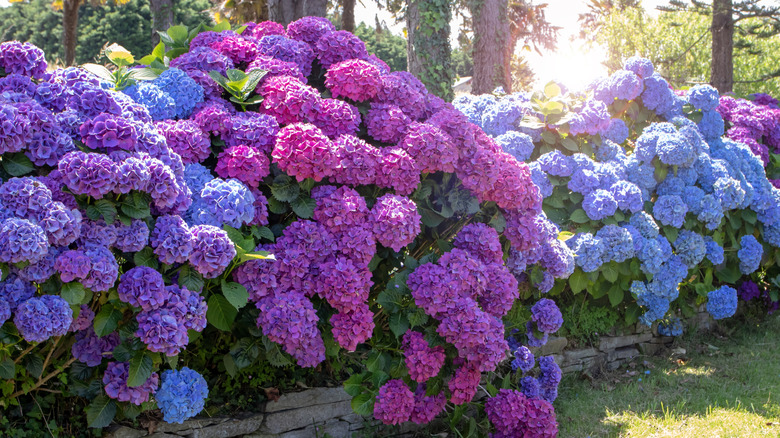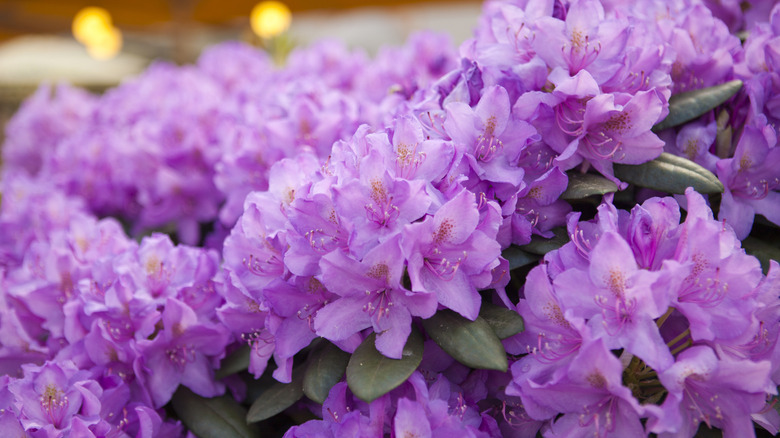Over Hydrangeas? Plant This Low-Maintenance Alternative For Showy Spring Blooms
If you're tired of fussing over your hydrangeas, there are other options that bloom just as beautifully. Many gardeners love the summer clusters that hydrangeas provide, but they can be demanding — needing just the right amount of moisture and the right soil pH to bloom blue or pink. The hydrangea's color-changing trick depends on chemistry, but keeping the soil within that narrow range often means constant testing and adjusting (even though there is a simple vinegar trick that will turn your hydrangeas from pink to blue). On top of that, many hydrangeas tend to wilt quickly in heat or drought, making them high-maintenance for busy gardeners. If you're ready for a shrub that delivers equally showy color with less work, rhododendrons are the answer.
Unlike hydrangeas, which often lose their leaves in winter, rhododendrons hold their structure year-round. They provide evergreen foliage and dramatic spring flowers in nearly every shade imaginable — from white and cream to salmon, deep red, and purple. Once established, they're less fussy about watering and thrive in the dappled shade that challenges other flowering shrubs. Their sturdy, textured leaves also make them an excellent background for other plants. They add structure to woodland gardens and foundation plantings alike, brightening early spring landscapes when hydrangeas are still dormant. And with dozens of species suited to a wide range of climates, there's a rhododendron for almost every garden setting.
Why rhododendrons are a better choice than hydrangeas
Rhododendrons deliver enduring beauty with surprisingly little effort. Most rhododendrons do best in partial shade, but it's important to learn everything you need to know about rhododendrons before you plant any specific cultivar. Shade allows them to be protected from the hot afternoon sun, and they like acidic, well-drained soil that is rich in organic content. Regular mulching helps keep the roots cool and retains moisture, while pruning after flowering is beneficial for maintaining their shape. In return, you can expect to see vibrant blooms from spring through to early summer and glossy green leaves throughout fall and winter. This is unlike hydrangeas, which become twiggy and brown later in the year, losing their blooms and many of their leaves to the cold.
Among the many cultivars, Rosebay (Rhododendron catawbiense) is a dependable native choice, and it's one of several flowering shrubs that will bring drama to your yard. It forms a dense, rounded shrub with large trusses of lilac-purple blooms that brighten landscapes from mid-spring to early summer. For colder regions, PJM Elite (Rhododendron 'PJM Elite'), from the rhododendron PJM group, has a reputation as one of the toughest hybrids available — an early bloomer with radiant reddish-purple flowers and evergreen foliage that turns deep mahogany-purple as temperatures drop. Both varieties attract butterflies and hummingbirds while asking for minimal upkeep. If hydrangeas test your patience, these resilient rhododendrons promise the same bountiful blooms with far less work.

